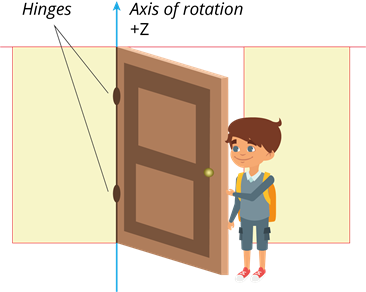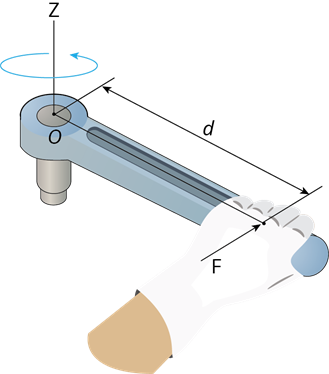
PUMPA - SMART LEARNING
எங்கள் ஆசிரியர்களுடன் 1-ஆன்-1 ஆலோசனை நேரத்தைப் பெறுங்கள். டாப்பர் ஆவதற்கு நாங்கள் பயிற்சி அளிப்போம்
Book Free DemoIn the previous section, we have learned resultant forces.
In this section, we will discuss rotating effects of force.
Have you noticed the position of the handle in a door?
It is invariably located at the edge of the door and not at some other place.
Why? Have you attempted to push a door by putting your hand closer to the hinges or the fixed edge? What do you see?
The door can be smoothly opened or closed when you apply the force at a point far away from the fixed edge.

Axis of rotation
In this case, the force you apply is used to turn the door about the fixed edge. Whenever the distance between the fixed edge and the point of application of force increases, this turning effect of the applied force is much higher.
The axis of the fixed edge about which the door is rotated is called the ‘Axis of rotation’.
Attach one end of a rod to the floor or wall and tangentially apply a force at the other end. The rod will be turned about the fixed point is known as the ‘Point of rotation’.

Point of rotation